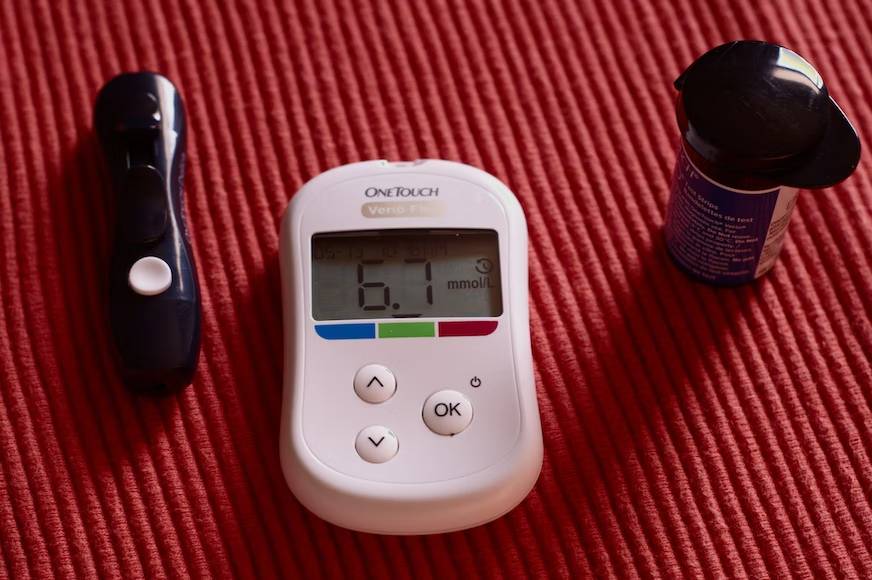Diabetes is a condition where the pancreas does not produce enough insulin — a hormone regulating blood glucose — or when the body cannot use the insulin produced effectively. There are mainly two types of diabetes:
Type 1: In Type 1 diabetes, the body’s insulin production is affected. The cause for this is unknown, but it is usually discovered in adolescence or childhood. Doctors believe it is caused by an autoimmune reaction when the body attacks itself, destroying pancreatic cells and curtailing insulin production. Symptoms are excessive urination, thirst, extreme hunger, loss of weight, blurry vision, and fatigue.
Type 2: In Type 2 diabetes, although your body produces insulin, it cannot effectively use it. More than 95% of those with diabetes have this type. A sedentary lifestyle, family history, and obesity are the major causes.
Keeping note of a normal blood sugar levels chart can help you prevent or pre-empt diabetes to a great extent as it will make you conscious of keeping glucose levels in check.
Let’s look at what your blood sugar levels ought to be
Here’s what a normal blood sugar levels chart looks like:
Glucose levels for children (under 12)
- Fasting: 80-180 mg/dL
- Pre-meal: 90-180 mg/dL
- Two hours post-meal: Up to 140 mg/dL
- At bedtime: 100-180 mg/dL
Glucose levels for teenagers
- Fasting: 70-150 mg/dL
- Pre-meal: 90-130 mg/dL
- Two hours post-meal: Up to 140 mg/dL
- At bedtime: 90-150 mg/dL
Glucose levels for adults (20+)
Without diabetes
- Fasting value: 70-90 mg/dL
- Two hours after eating: less than 140 mg/dL
Pre-diabetes
- Fasting value: 100-125 mg/dL
- Two hours after eating: 140-180 mg/dL
Diabetes
- Fasting value: 126 mg/dL and above
- Two hours after eating: above 200 mg/dL
Blood sugar levels for those who are 65+ years
Without diabetes
- Fasting value: 70-90 mg/dL
- Two hours after eating: under 140 mg/dL
Pre-diabetes
- Fasting value: Min —100 mg/dL; Max —125 mg/dL
- Two hours after eating—Between 140 and 180 mg/dL
Diabetes
- Fasting value: 126 mg/dL and above
- Two hours after eating: above 200 mg/dL
For older adults, other health conditions need to be factored in before checking the normal blood sugar levels for adults. For instance, heart conditions and renal ailments can affect sugar levels in blood.
What does Hba1C mean?
HbA1c or glycated haemoglobin is essentially the average blood sugar levels over the last two or three months. Glycated haemoglobin is made when glucose sticks to red blood cells (RBCs) and accumulates there. RBCs are active for around 2-3 months.
A high HbA1c means there is too much sugar in the blood. As per a normal blood sugar levels chart, your HbA1c level will be lower than 5.7%. If it falls in the range of below 5.7-6.4%, you are at risk of type 2 diabetes. If you have diabetes, your HbA1c level is likely more than 6.5%. So get your HbA1c checked regularly.
Signs of diabetes
Do you wake up at night to use the bathroom? It may be a sign of diabetes. Here are some signs to see if your sugars are abnormal or fall within the normal diabetes range:
- Frequent urination: When glucose levels are high, the kidneys expel the excess blood sugar. This is why people with diabetes tend to urinate more frequently.
- Increased hunger and thirst: Frequent urination causes excessive thirst.
- Fatigue: This is because the body needs to work hard to get rid of the excess glucose.
- Blurry vision: High blood sugar level in blood can damage the small blood vessels in the eyes.
- Unexplained weight loss: When the body cannot use glucose for energy, it starts burning fat and muscle. This results in significant weight loss (around 5% of overall body weight).
- Tingling in the feet or hands: This is because high blood sugar can impact the nerves.
Are you at risk for diabetes?
Here are some factors that may play a role in the development of diabetes:
- You are 45 years or older.
- You are overweight or obese.
- You lead a sedentary life.
- You have a family history of diabetes.
- You have a history of gestational diabetes.
- You have a history of hypertension, heart disease, or stroke.
If you have diabetes, learn your GIs
The glycemic index (GI) is a measure of how fast a certain type of food spikes blood sugar levels. Low GI foods have a score of 55 or lower while 70 and up is considered high GI.
For those with sugars in a normal diabetes range, low GI foods are the best bet for regulating blood glucose levels. That means you should eat more whole grains, nuts, vegetables, and legumes while avoiding food such as refined flour, cakes, sweets, and sweetened juices.
Diabetes triggers you may not know about
Sugar, maple syrup, honey, white rice… everyone knows about these everyday foods that can trigger a spike in blood sugar levels. But did you know that there are hidden triggers as well, triggers you probably never imagined? Did you know sunburns and coffee also spike blood sugar levels?
Experts say that the blistering pain of a sunburn can cause stress, which can lead to a blood sugar spike. In terms of coffee, it is believed that some people’s glucose levels may be affected by caffeine. Losing sleep (which makes your body use insulin less efficiently), skipping breakfast (which can cause a post-lunch spike), and dehydration (less water means glucose is more concentrated) are also among the lesser-known triggers.
Extreme heat can cause blood sugar levels to drop. This is because heat causes blood vessels to dilate, helping them absorb insulin more rapidly, which in turn leads to low blood sugar.
Let’s stop diabetes, let’s start walking
If not managed properly, diabetes may over time damage the heart, blood vessels, kidneys, and eyes. Did you know that people with diabetes are twice as likely to get strokes and heart attacks?
There are 537 million adults (20-79 years) living with diabetes worldwide, which is one in ten adults. This number is predicted to rise to 643 million by 2030. Prevention is always better than cure when it comes to diabetes, so try and maintain a healthy weight, be physically active (at least 30 minutes of exercise a day), eat healthily, and avoid smoking.








